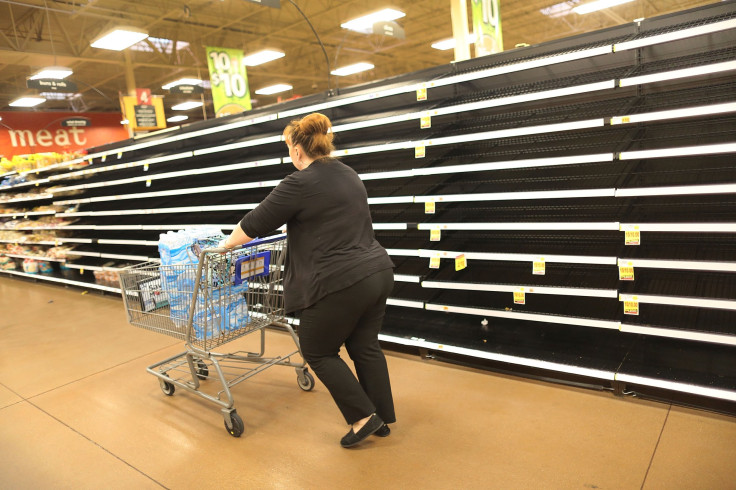Will Kroger Really Go The Way of Sears?

After falling in 2017, shares of Kroger (NYSE:KR) have bounced back in 2018. Kroger shares are up 6.5% on the year as of this writing, compared to the S&P's negative 1% returns. But despite heavy investments and splashy digital acquisitions -- including the acquisition of Home Chef and an investment in British e-grocer Ocado -- not all are convinced Kroger can make the transition.
This article originally appeared in the Motley Fool.
In fact, Neil Saunders, managing director of GlobalData Retail, said in an article published by Chain Store Age, that one statement made during Kroger's recent conference call with analysts reminded him of something Sears Holdings (NASDAQOTH: SHLDQ) CEO Eddie Lampert used to say. That's a pretty dire comparison since Sears Holdings just filed for bankruptcy protection in October.
Say what?
Saunders' concern focused on this quote from Kroger CEO Rodney McMullen:
We're moving from a traditional grocer to a growth company with both a strong customer ecosystem that offers anything, anytime, anywhere, and asset-light, high-margin alternative partnerships and services.
You might ask, what's the problem with this? Saunders contends that Kroger's focus on digital has taken attention away from stores. Highlighting the "deterioration" of Sears' physical stores after management tried to invest in e-commerce, Saunders is basically implying that unless Kroger focuses on the physical stores, the company could eventually decline to bankruptcy just as Sears and Kmart did.
However, there a few reasons why I think this conclusion is dead wrong.
Kroger is investing in its stores
I don't quite get the contention that Kroger is neglecting its store base. Saunders wrote that "While Kroger has a very strong network of shops, we remain broadly unimpressed by the quality of its estate. Many stores, especially regional banners, feel run down and dispiriting."
But the company's "Restock Kroger" program, announced one year ago, includes a fair amount of store remodeling. The company is on track to remodel about 600 stores this year, with space-optimization improvements based on data analytics. This is a "massive undertaking," according to management.
For what it's worth, the Ralph's near where I live -- one of Kroger's brands -- is quite pleasant.
Digital revenue streams are taking off
It would also be folly for the company not to invest in digital initiatives since these are high-growth and profitable. Last quarter digital sales grew 60%. One highlight was Kroger Precision Marketing, which grew a whopping 150%. Precision Marketing utilizes Kroger's sales data to advertise products on its website as customers browse for goods. Online advertising close to the point of purchase is highly attractive; in fact, CFO Mike Schlottman boasted that the company's click-through rate is about two to three times industry benchmarks.
These non-core businesses like Precision Marketing and the Kroger Personal Finance product (a co-branded credit card with Mastercard and US Bank), are beneficial because they are relatively high-margin and capital-light, especially compared to groceries. Kroger should absolutely be taking advantage of its scale and platform to drive additional digital revenue streams.
Saunders did acknowledge that investment in digital was a must, writing, "There is no doubt that consumer interest in online grocery is growing and Kroger needs to play strongly in this space if it is to defend its market share."
Bigger and closer than Sears
While e-commerce has made a huge dent in physical retailers all over the U.S., the grocery industry is somewhat immune. The logistics problems of keeping food fresh remains a problem for delivery. According to a recent Moody's report, online orders still only make up 2% of the $1 trillion food market. That's in contrast to overall retail, where e-commerce made up 9.8% (and rising) of sales in the third quarter.
Since people make far more trips to the grocery store than to buy big-ticket items like the ones Sears was known for, time-saving proximity also matters. That's where Kroger has another key advantage, with 2,765 grocery stores across the country. That's the most pure-play grocery stores in the U.S., fueling Kroger's No. 2 market share by revenue, second only to Walmart.
Since so many consumers still like to visit the local grocery store, that huge store footprint is a big advantage. In contrast, the lower-frequency nature of Sears visits (apparel, hardware, appliances, etc.) was a huge disadvantage. Also as superstores such as Walmart and Costco cropped up in the '90s and '00s, one could pick up clothes or hardware along with food and groceries at these food-centric super-stores.
In other words, the high-frequency nature of grocery shopping allows Kroger to expand into other goods in a way that gives it more flexibility to compete than Sears and Kmart. And Kroger is doing just that, adding apparel aisles this year and striking new partnerships with Ace Hardware and Geoffrey's Toy Box (the latter after the Toys R' Us bankruptcy).
Kroger ain't Sears
While the comparison to Sears may be a headline-grabber, I don't think it's accurate, and management isn't wrong to pursue digital initiatives. While competition in groceries is no doubt heating up, I think Kroger has the scale to transform itself into a successful omnichannel superstore, which was always a tougher proposition for Sears.
Billy Duberstein owns shares of Kroger. His clients may own shares of some of the companies mentioned. The Motley Fool owns shares of and recommends Mastercard. The Motley Fool recommends Costco Wholesale. The Motley Fool has a disclosure policy.





















